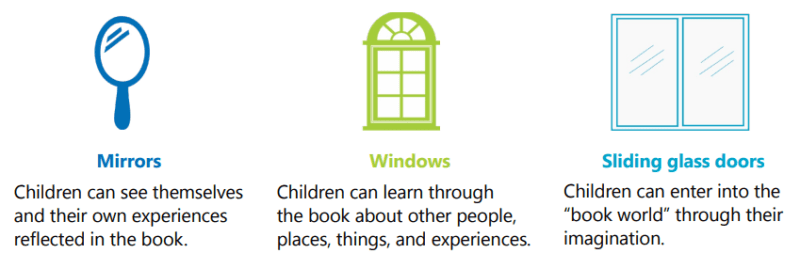Libraries today are vibrant, community-centered spaces that foster learning, creativity, and connection. The modern library has become a hub for exploration, where people of all ages can engage with information, technology, and each other in meaningful ways. As the role of libraries continues to expand, so does the responsibility of information professionals to design learning experiences that are inclusive, innovative, and grounded in theory and practice. My own experiences have shown me that libraries are not just places to access knowledge, but places to create it. From teaching myself piano with a borrowed book to witnessing how libraries now support hands-on learning through makerspaces and technology labs, I’ve come to see how these evolving spaces embody what Michael Stephens (2014) calls “infinite learning.”
Of course, much can be said about the kind of learning that naturally comes from reading. I still remember being in middle school, eager to learn how to play the piano. Music lessons were something my family could not afford, but we did have a keyboard and a library card. I went to the library and asked the librarian if they had any piano sheet music. They led me to the section, and I checked out Taylor Swift’s Speak Now Piano Book. I taught myself to play “The Story of Us,” a song I already knew all too well (see what I did there?). I never became a concert pianist, but I did develop a new skill and discovered a hobby I would not have had access to otherwise, all thanks to my library.
Beyond the books, libraries are places where hands-on learning takes place in what Michael Stephens calls “spaces for infinite learning,” where participation and collaboration reign (2014). In his work, Stephens describes libraries evolving into educational hubs that encourage self-directed, lifelong learning through makerspaces, hackathons, and other participatory experiences. Similarly, Bookey (2017) highlights the next generation of libraries as spaces that foster exploration and creativity, noting examples such as Arapahoe Libraries’ gadget checkout program, Kent District Library’s cutting-edge technology lab featuring 3D and robotics tools, and Cleveland Public Library’s video game zone. These examples reflect how libraries are continually adapting to meet their communities’ changing needs by providing opportunities for users to create, experiment, and learn without limits. In these dynamic environments, learning becomes infinite, rooted in curiosity, collaboration, and the freedom to explore new ideas as quickly as technology evolves.

This vision of infinite learning aligns closely with principles of collaborative learning, which emphasize shared responsibility, peer support, and the co-construction of knowledge. Research highlights a wide range of social, psychological, and academic benefits, such as improving communication, reducing anxiety, and promoting deeper understanding through peer engagement (Laal & Ghodsi, 2012). Libraries, through their physical and digital spaces, are uniquely positioned to foster this kind of interaction. Makerspaces, group study rooms, and shared digital platforms allow users to work together to solve problems, explore new technologies, and build community. These approaches not only align with modern educational practices but also reflect the library’s evolving mission as a participatory, inclusive learning environment.
Equally important is the support libraries provide for independent, self-paced learning. This learner-centered approach fosters autonomy, personal responsibility, and lifelong learning, which are core values in library and information science. One strategy that exemplifies this is flipped learning, which allows users to engage with foundational content independently before applying it through discussion or practice. Becker (2021) explains that this model encourages critical thinking and ownership of the learning process, while Snipes and Slone (2015) found that it increases motivation and engagement with complex tasks. Whether through digital literacy programs, online workshops, or self-directed projects, libraries are creating flexible pathways for learning that meet users where they are.

In many ways, today’s libraries embody the idea of infinite learning because the hyperlinked library and Library 2.0 is all about adapting to new technologies, ideas, and community needs. They are no longer defined by shelves of books, but by the opportunities they provide for curiosity, experimentation, and growth. Whether someone is checking out a gadget, playing an instrument, or simply finding a quiet place to think, the modern library empowers individuals to learn on their own terms. As Michael Stephens suggests, libraries are “spaces for infinite learning,” and their continued evolution ensures that everyone, regardless of background or resources, has the chance to explore, create, and connect in meaningful ways.
References:
Becker, B. (2021, September 22). The flipped classroom and teach identity. [Youtube video]. https://www.youtube.com/watch?v=o-Fhu4bPV0c
Bookey, J. L. (2017, December 6). 8 awesome ways libraries are making learning fun. Huffpost. https://www.huffpost.com/entry/8-awesome-ways-libraries_b_7157462
Laal, M., & Ghodsi, S. M. (2012). Benefits of collaborative learning. Procedia – Social and Behavioral Sciences 31, 468-490. https://doi.org/10.1016/j.sbspro.2011.12.091
Macmillan Education. (2024, February, 22). Establishing a collaborative learning environment. https://www.macmillaneducation.co.za/news/education-news/establishing-a-collaborative-learning-environment.
Snipes, P. R., & Slone, M. B. (2015, April). Successful flipped instruction. School Library Monthly 31(6), 17-20. https://research-ebsco-com.libaccess.sjlibrary.org/linkprocessor/plink?id=db1d8d94-0bd6-3214-be77-159c0ac01cca.
Stephens, M. (2014, November 26). Y Library? Making the case for the library as space for infinite learning. https://www.dropbox.com/scl/fi/4zt1yliwb2ffzr8euix2p/YLibraryInfiniteLearning.pdf?rlkey=m0v6lkd43ufilkp5aktawhlpr&e=1&dl=0

